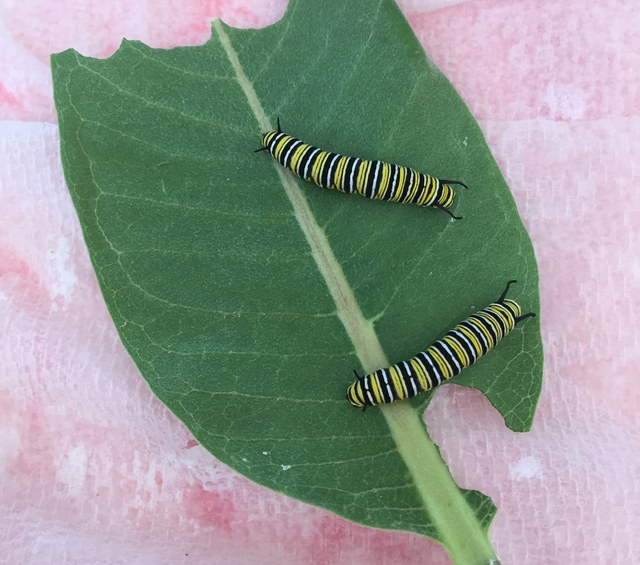'Tis the season for egg hunts—monarch butterfly egg hunts that is! Each year Western monarch butterflies lay their eggs on milkweed plants all around the West. Milkweed plants provide the critical food supply the monarch caterpillars (larva) will need once they hatch and as they grow into adults.
In Central Oregon, monarch butterflies lay their eggs in summer on local patches of milkweed. Females will lay 300-500 eggs total, but usually only a couple eggs per plant to ensure the caterpillars have enough food once they hatch. Our first monarch butterflies of the season have been spotted, so now is the time to start looking for these regional beauties! Here’s how to check your local milkweed for eggs or caterpillars:
Step 1: Timing
Monarch eggs hatch in 3-5 days so timing your hunt can be hard! Our pro tip: watch for female monarch butterflies hanging around your milkweed. They may be laying eggs!
Step 2: Identification
Monarch eggs are tiny—the size of a pencil tip or pinhead!! Get out your magnifying glass! Initial egg color is off-white or yellow with ridges running from top to bottom of the egg. As the egg matures the black head of the caterpillar can be seen. Learn more about egg ID.
Caterpillar (larva) Identification
Once the egg hatches, monarch caterpillars (larva) go through a series of stages called instars. A newly hatched instar is only 2-6 mm long! Keep that magnifying glass out! Caterpillars start as pale green or greyish white color and eventually develop those iconic yellow and black bands. Learn more about the identification stages of instars.
Step 3: Where to look
Caterpillars (larva) are voracious eaters of milkweed. Look for munched leaves and you may find your larva. Please know, however, that it’s normal for caterpillars to take a break from eating and wander a short distance away from the milkweed plants. Please do not pick them up and put them back on the milkweed. They’ll return when they are ready to feed again. :)
Step 4: I’ve found something! Now what?
- Don’t move them! Monarch eggs and larva are incredibly fragile and easy to damage. Our goal is just to document that monarchs are breeding in our area.
- Share your pictures and stories with the Land Trust! Email the Land Trust with your finds!
- Take pictures of any monarch butterflies, eggs, or caterpillars you find and document your sightings on the Western Monarch Milkweed Mapper.
- Plant more local, native milkweed for future generations of monarchs!
Learn more:
- Interested in planting showy milkweed? We'll send you seeds!
- The Magic of Milkweed
- Learn more about monarch conservation


